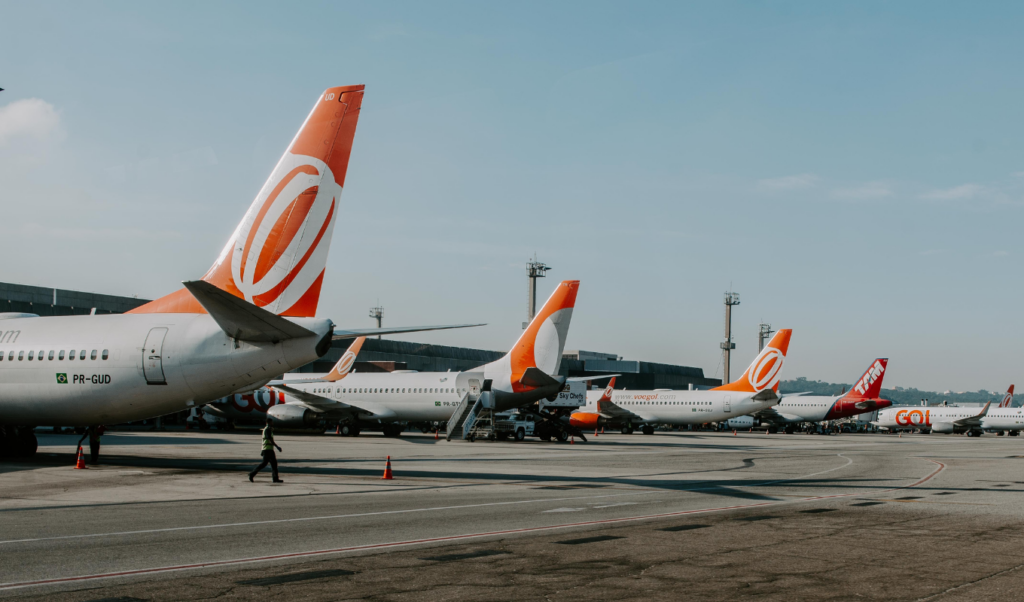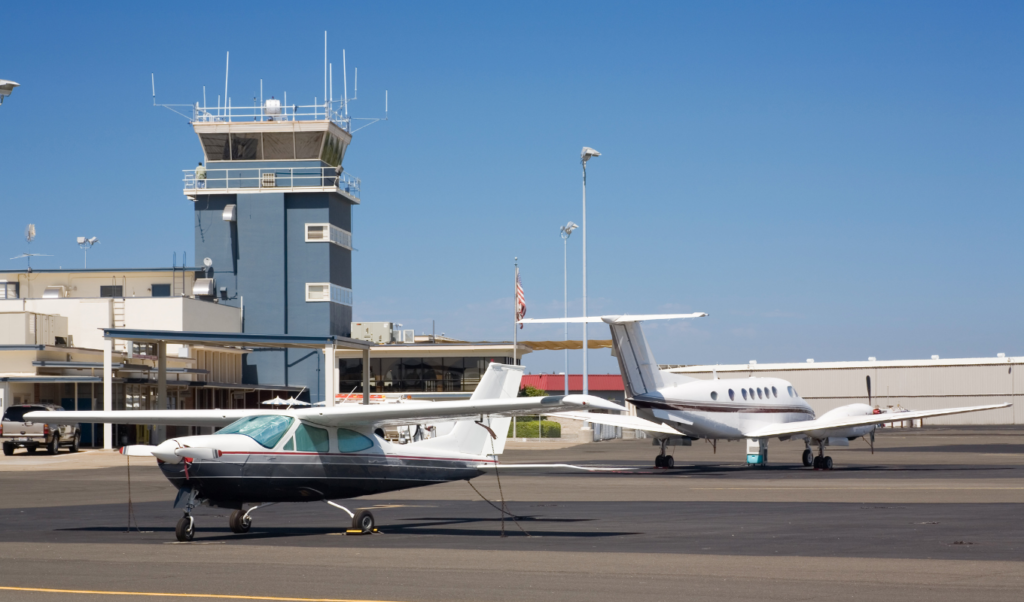Flight prices don’t just depend on distance – they’re influenced by factors like fuel costs, demand, airport size, and competition. For example, flights from the U.S. to the Caribbean often cost less than flights to Europe or Asia. Airlines use AI to adjust prices in real time based on regional demand and market conditions. Here’s a quick breakdown of why prices differ and how you can save:
- Fuel Costs: Make up 22–25% of airline expenses and vary by region.
- Airport Size: Larger airports may have higher fees but more competition, which can lower prices.
- Taxes and Fees: U.S. tickets include taxes like a 7.5% domestic tax and $22.90 for international departures/arrivals.
- Timing: International flights are cheapest 6–8 weeks ahead, while domestic flights are best booked 3–4 weeks in advance.
- Travel Seasons: Avoid peak seasons for better deals; midweek flights and off-peak months (like September or October) are often cheaper.
- Low-Cost Airlines: Budget carriers drive prices down on many routes.
Quick Tips to Save:
- Compare fares from nearby airports.
- Set up price alerts to track drops.
- Adjust travel dates to midweek or off-peak seasons.
Understanding these factors can help you plan smarter and save hundreds on your next trip.

Main Causes of Regional Price Differences
Regional flight prices are shaped by a mix of factors, including airport size, local operating costs, taxes, and seasonal tourism patterns. These elements build on earlier discussions of dynamic pricing and market demand.
Airport Size and Airline Options
The size of an airport and the number of airlines operating there play a major role in determining ticket prices. As of April 2025, U.S. airlines are running 10.6% fewer flights than they did in 2019, but seat capacity has risen slightly by 0.6%. This shift reflects a trend toward using larger planes. For instance, United Airlines now averages 20 more seats per departure across its network compared to 2019.
Local Costs and Airport Facilities
Regional variations in operating expenses significantly impact ticket prices. Labor costs, which make up about 31% of an airline’s operational budget, and fuel costs, accounting for 22%, are two major contributors. These expenses often depend on local market conditions and the infrastructure of the airport.
While larger airports might benefit from economies of scale, they also face higher operational expenses. These include:
- Repairs for aircraft ground damage
- Compliance with environmental regulations
- Security measures
- Utility expenses
- Runway and terminal maintenance
- Technology upgrades
- Employee training programs
Taxes and Exchange Rates
Government fees and taxes also influence regional ticket prices. Below is a snapshot of U.S. aviation taxes and fees in 2025:
| Tax/Fee Type | Current Rate (2025) |
|---|---|
| Domestic Ticket Tax | 7.50% |
| Flight Segment Tax | $5.20 |
| International Departure Tax | $22.90 |
| International Arrival Tax | $22.90 |
| September 11th Fee | $5.60 |
| Passenger Facility Charge | Up to $4.50 |
For example, on a round-trip flight from Peoria to Raleigh/Durham with a connection at Chicago O’Hare, taxes make up 18.6% of the total ticket price.
Travel Seasons and Tourism
Airlines frequently adjust fares based on local events, tourism trends, and peak travel seasons, leveraging dynamic pricing strategies to maximize revenue.

Finding Better Prices Across Regions
If you’re looking to stretch your travel budget, knowing how to score better deals across regions can make a big difference. By understanding regional pricing and using a few smart strategies, you can zero in on the best fares.
Compare Nearby Airports
Sometimes, the key to saving big is as simple as checking flights from nearby airports. Look at options within a 70–100 mile radius of your departure and arrival cities. This approach works particularly well in areas with multiple airports. For instance, if you’re heading to Boston, flying into Providence might cost less. Similarly, travelers bound for Los Angeles could find cheaper flights by choosing Long Beach Airport instead of LAX. These smaller airports often have lower fees and less congestion, which can lead to better deals.
Monitor Price Changes
Flight prices can be unpredictable, but automated alerts can help you stay ahead of the game.
Setting up a price alert as soon as you know your travel dates is a smart move. It allows you to monitor fluctuations and grab the best price when it appears.
Adjust Travel Dates
Timing is everything when it comes to airfare. Regional demand and seasonality play a big role in pricing, and small adjustments to your travel dates can lead to significant savings. Here’s a look at how different days of the week can affect costs:
| Day of Week | Average Savings |
|---|---|
| Saturday | 17% less than Sunday flights |
| Tuesday | 12% less than peak prices |
| Wednesday | 10% less for European flights |
In 2023, domestic travelers who shifted their trips from the busy summer months to September or October saved an average of 32% on airfare.
To maximize your savings, keep these tips in mind:
- Opt for midweek flights whenever possible.
- Plan your trips during shoulder seasons when demand is lower.
- If traveling in the summer, consider late August for nearly 30% off peak prices.
- Avoid Sunday departures, as they tend to have the highest fares.

U.S. Regional Price Differences
Flight prices across the U.S. can vary widely depending on the state, thanks to factors like airport competition and seasonal demand. Diving into regional trends, it’s clear that local market dynamics play a big role in shaping airfare costs.
State-by-State Price Compare
Florida stands out for its low airfares, largely due to its numerous major airports and the intense competition among airlines operating there.
| Region/City | Average Round-trip Fare | Best Time to Book |
|---|---|---|
| Raleigh, NC | $126 | Winter |
| Charleston, SC | $139 | January |
| Houston, TX | $130 | October |
| Dallas, TX | $144 | November |
| Tampa, FL | $158 | February |
Raleigh, NC, offers particularly competitive rates, with flights around the July 4th holiday averaging just $207 – the lowest in the nation. Nationwide, domestic round-trip fares now average $306, reflecting a 19% drop compared to last summer, even though seat capacity remains 6% below pre-pandemic levels.
Beyond these averages, the presence of low-cost carriers significantly impacts pricing in many regions.
Low-Cost Airline Effects
Budget airlines have reshaped pricing across the U.S., often forcing larger, legacy carriers to adjust their rates. This competition benefits travelers, as seen on routes like Denver to New York, where fares have dropped from $350 to just $59, and San Francisco to Hawaii, where prices fell from $675 to $181.
The influence of these budget airlines extends beyond domestic flights:
| Route Type | Average Fare | Notable Trends |
|---|---|---|
| Domestic Flights | $306 | 19% cheaper than last summer |
| Canada Routes | $403 | Lower prices during off-peak |
| Mexico/Central America | $493 | Competitive year-round rates |
| European Routes | $1,100 | Higher than domestic averages |
| Asian Routes | $1,800+ | Premium pricing tier |
While the consumer price index for airline tickets has risen 25% over the past year, recent trends suggest some relief for travelers during off-peak travel seasons.

Conclusion: Smart Regional Flight Booking
When it comes to booking regional flights, understanding price variations can make all the difference. For example, short-haul flights like Perth to Rottnest Island can cost as much as $2.22 per kilometer, while long-haul international routes, such as Australia to London, average just $0.06 per kilometer – a stark contrast that highlights the importance of knowing where your money goes.
Flight pricing has come a long way, influenced by factors like airport fees, which can account for up to 40% of some sale fares. In this ever-changing pricing environment, being aware of regional trends and timing your purchase wisely can lead to significant savings.
To cut costs, consider comparing fares from nearby airports, keeping an eye on price trends, and planning trips during off-peak seasons. Services like Dollar Flight Club help travelers stay ahead of these fluctuations, offering alerts on deals that can slash ticket prices by up to 90%. On average, members save over $500 per ticket.
FAQs
How do fuel prices and airport size affect airfare in different regions?
Fuel costs are a key factor in determining airfare and can vary widely depending on the region. In some parts of the world, fuel expenses make up more than 30% of an airline’s operating costs, while in other areas, it’s closer to 25%. Airlines typically pass these costs on to passengers, which is why tickets tend to be more expensive in regions where fuel prices are higher.
The size of the airport also influences airfare. Larger airports usually have more flights and greater competition among airlines, which can help keep ticket prices lower. On the flip side, smaller or overcrowded airports often deal with higher operating costs and limited capacity, which can lead to higher fares. Travelers departing from smaller airports often face fewer flight options and steeper ticket prices as a result.
How can travelers save money on flights from smaller or less competitive airports?
Travelers flying from smaller or less competitive airports can stretch their dollars further with a few savvy approaches. Keep an eye on new routes – airlines often roll out discounted fares to draw attention to freshly added destinations. Being flexible with your travel dates can also make a big difference; flights during weekdays or off-peak hours usually come with a lower price tag.
Another tip? Book tickets one at a time instead of as a group. Airlines often have only a handful of seats available at the lowest fare, and booking individually increases your chances of snagging them. Lastly, consider signing up for flight alert services like Dollar Flight Club. These services notify you about heavily discounted fares – sometimes up to 90% off – so you can grab those deals before they’re gone.
How do low-cost airlines impact flight prices, and how can travelers save money by using them?
Low-cost airlines (LCCs) have reshaped the aviation industry by driving down flight prices and boosting competition. By operating with streamlined overhead costs, these airlines cater to budget-conscious travelers, offering fares that are often much lower than traditional carriers. In areas where LCCs are active, legacy airlines frequently adjust their pricing strategies to stay competitive, giving travelers more affordable options.
If you’re looking to save money with LCCs, timing is everything. Booking your flights well in advance often secures the best prices. Flexibility with travel dates can also help you snag a great deal. Watch for special promotions and sign up for flight alert services to stay in the loop on discounts. However, keep an eye on extra fees for things like baggage or seat selection – these can add up quickly. By planning carefully, you can make the most of the low fares without breaking your budget.










